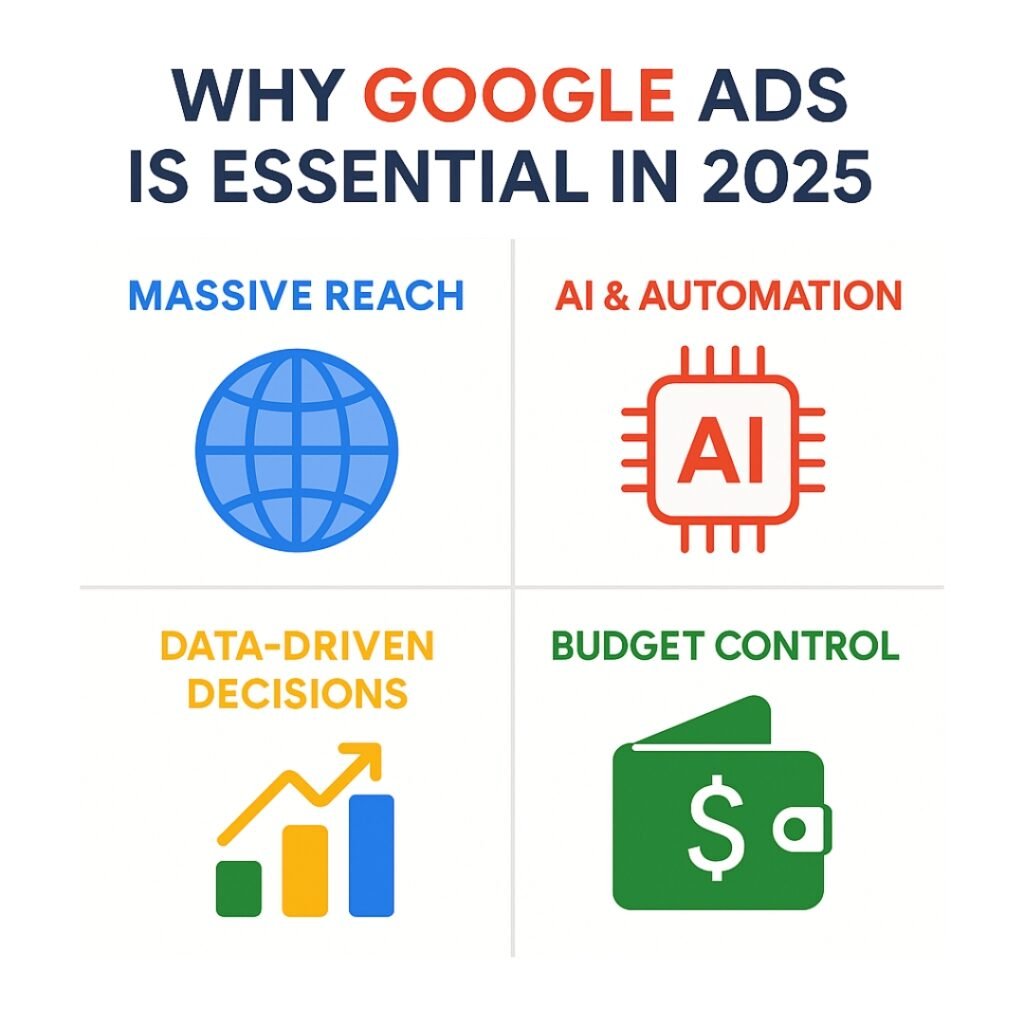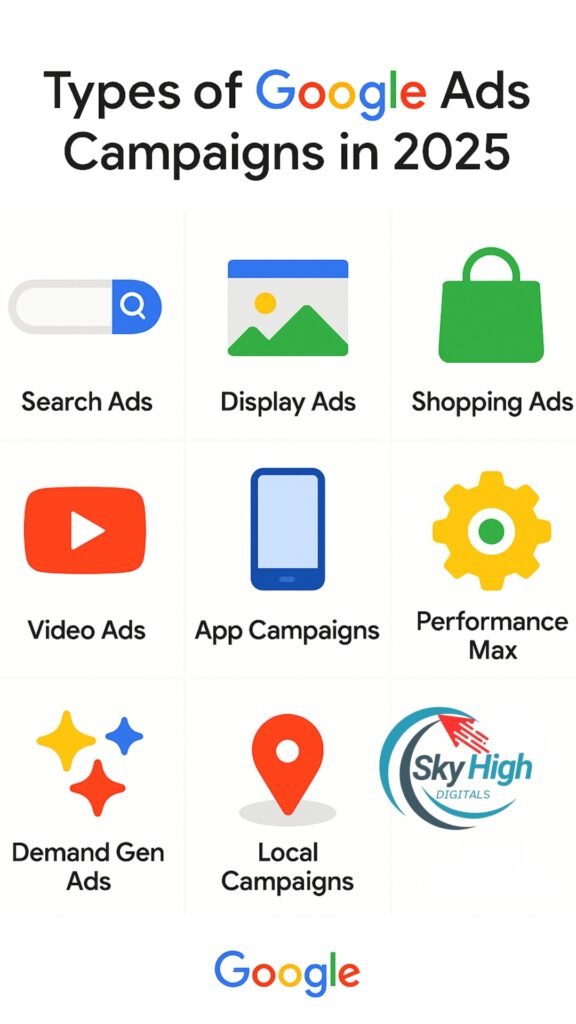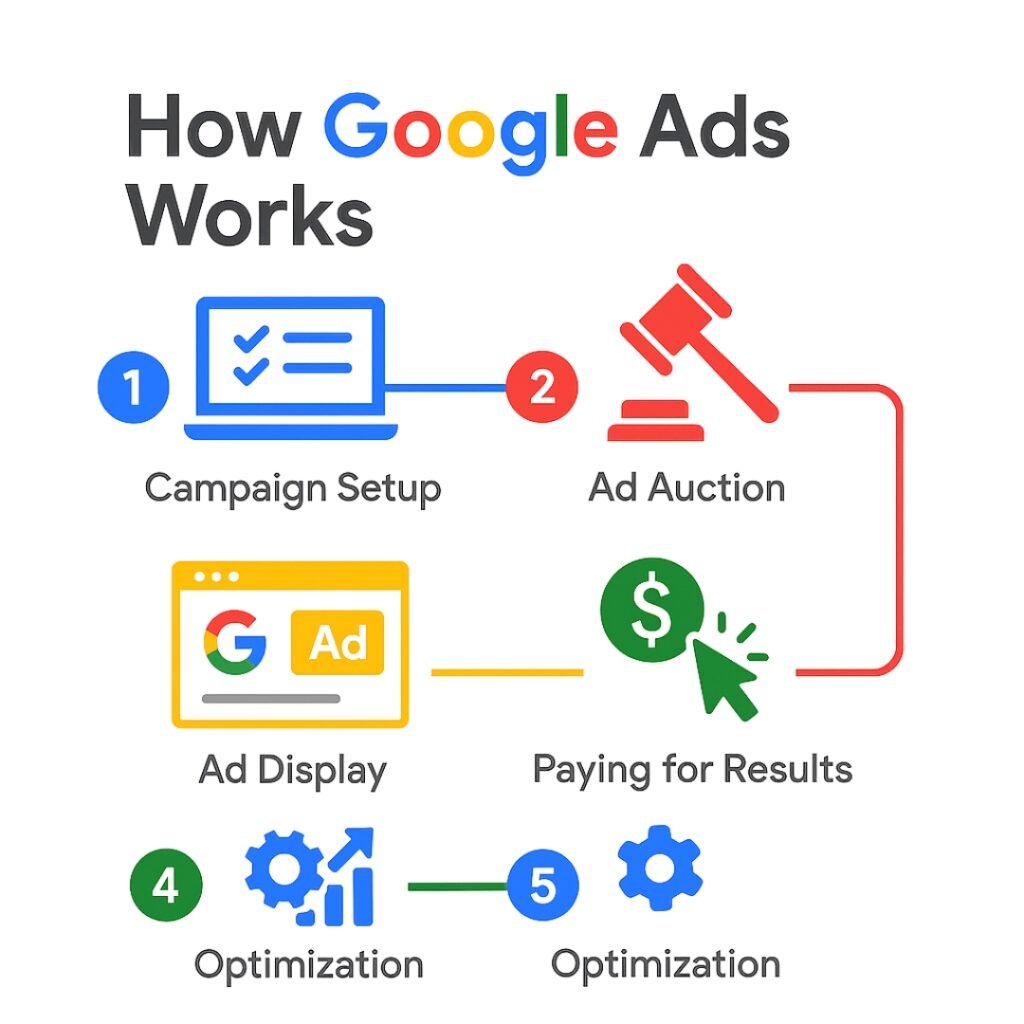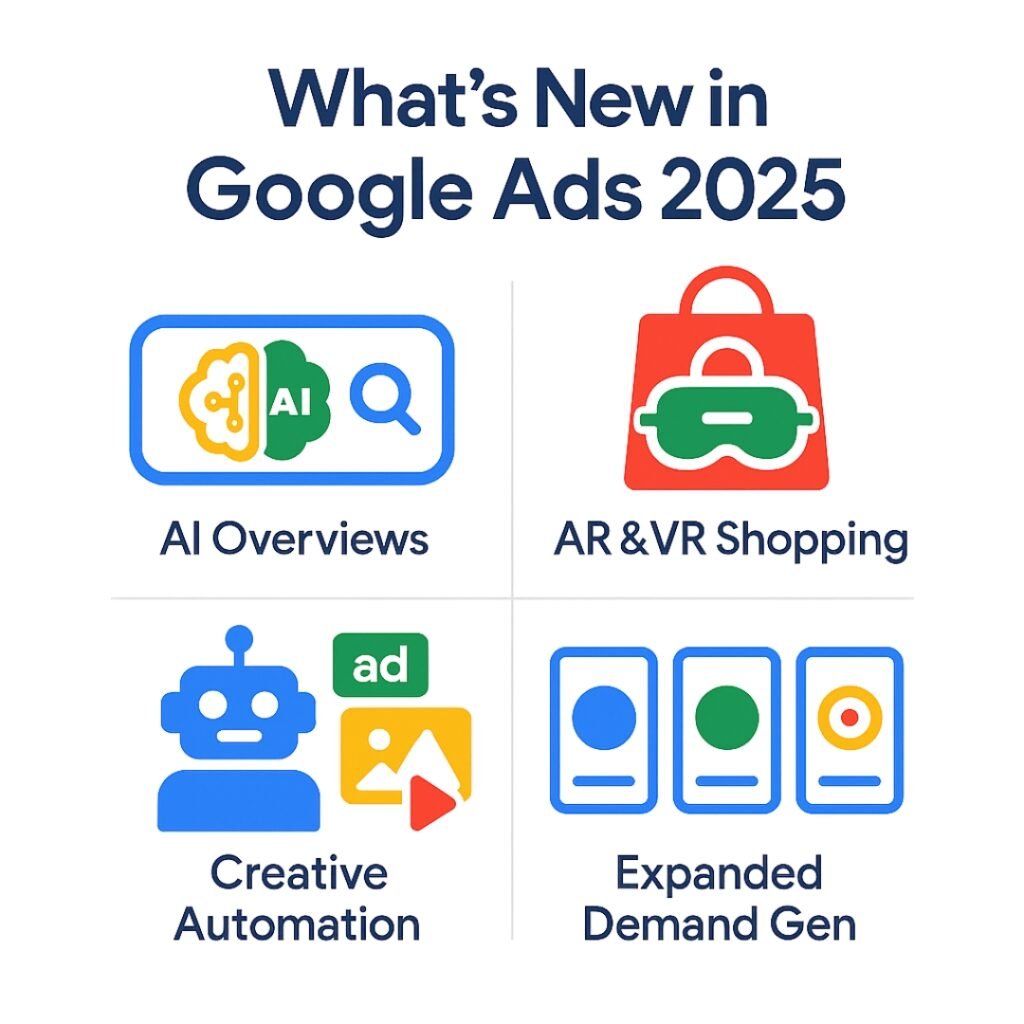Google Ads : Why They Matter and How They Work
What is Google Ads?
Google Ads is the world’s most powerful online advertising platform, helping businesses of all sizes connect with their ideal customers. From Google Search to YouTube, Google Maps, Gmail, and millions of partner websites and apps, it offers unmatched reach. Advertisers set their own budget, choose where their ads appear, and rely on Google’s automation and insights to deliver results.
Why Google Ads is Essential
In 2025, digital advertising is more competitive than ever. Here’s why Google Ads remains indispensable:
Massive Reach: With billions of daily users on Google Search, YouTube, and other Google services, your business can reach potential customers everywhere they spend time online.
AI & Automation: Google now uses advanced artificial intelligence to predict which people are most likely to convert, reducing guesswork and boosting efficiency.
Data-Driven Decisions: Smart dashboards give detailed performance reports so you can see which ads are working and adjust accordingly.
Budget Control: Whether you’re a startup or a large brand, you can set your budget limits and pay only for the results that matter.

Types of Google Ads Campaigns in 2025
Unlike a one-size-fits-all approach, Google Ads offers several campaign types—each designed for specific goals. Here’s a breakdown of the main types and what makes them important
1. Search Ads
These are text-based ads that appear at the top of Google Search results when someone searches for keywords related to your product or service. Search Ads are highly effective because they reach customers at the exact moment they’re looking for what you offer.
2. Display Ads
These are visual ads—images, banners, or rich media—that appear across Google’s vast Display Network, which includes millions of websites and apps. They’re great for increasing brand awareness and retargeting visitors who previously engaged with your business.

3. Shopping Ads
Perfect for e-commerce, Shopping Ads display your product image, price, and store details directly in search results. In 2025, they’ve become even more interactive with AR (Augmented Reality) and VR (Virtual Reality) try-ons, allowing customers to virtually “test” products like clothes, shoes, or accessories before buying.
4. Video Ads
Video campaigns run primarily on YouTube & can appear before, during, or after videos. They’re available in multiple formats like skippable, non-skippable, bumper ads, & interactive shoppable videos—making them ideal for storytelling & brand engagement.
5. App Campaigns
Video campaigns run primarily on YouTube & can appear before, during, or after videos. They’re available in multiple formats like skippable, non-skippable, bumper ads, and interactive shoppable videos—making them ideal for storytelling and brand engagement.
6. Performance Max Campaigns
This is Google’s flagship AI-driven campaign type in 2025. Instead of running separate campaigns for different channels, Performance Max automatically delivers your ads across Search, Display, YouTube, Gmail, Maps, and Discovery—optimizing results in real time.
7. Demand Gen Ads
Replacing Discovery Ads, Demand Gen campaigns focus on reaching people earlier in their buying journey. These ads appear on YouTube, Google Discover, and Gmail, using formats like image carousels and short videos to inspire interest and generate demand before customers even start searching.
8. Local Campaigns
Designed for physical businesses, Local Ads help drive store visits, phone calls, or in-person appointments. They appear in Google Maps, Search, and across local platforms, making them crucial for restaurants, shops, clinics, and service providers.
How Google Ads Works
Campaign Setup: Businesses create ads by choosing their campaign type, keywords, targeting, budget, and ad creatives (text, images, or videos).
Ad Auction: Every time someone searches or browses, Google runs a split-second auction to determine which ad is most relevant. Factors like bid amount, ad quality, and relevance decide the winner.
Ad Display: Winning ads are shown on Search results, YouTube, or other platforms.
Paying for Results: Most campaigns use pay-per-click (PPC), so advertisers only pay when someone interacts with the ad (clicks, views, installs, etc.).
Optimization: Google provides live performance data, plus AI-driven suggestions to improve targeting, messaging, and bidding for better ROI.

What’s New in Google Ads for 2025

AI Overviews: Ads now appear within AI-generated search summaries, blending naturally into personalized answers.
AR & VR Shopping: Interactive shopping experiences help e-commerce brands showcase products more effectively.
Creative Automation: Google can now generate ad assets—images, text, and videos—automatically to save time and boost performance.
Expanded Demand Gen: Broader placements and new formats mean brands can capture attention even earlier in the buyer journey.
